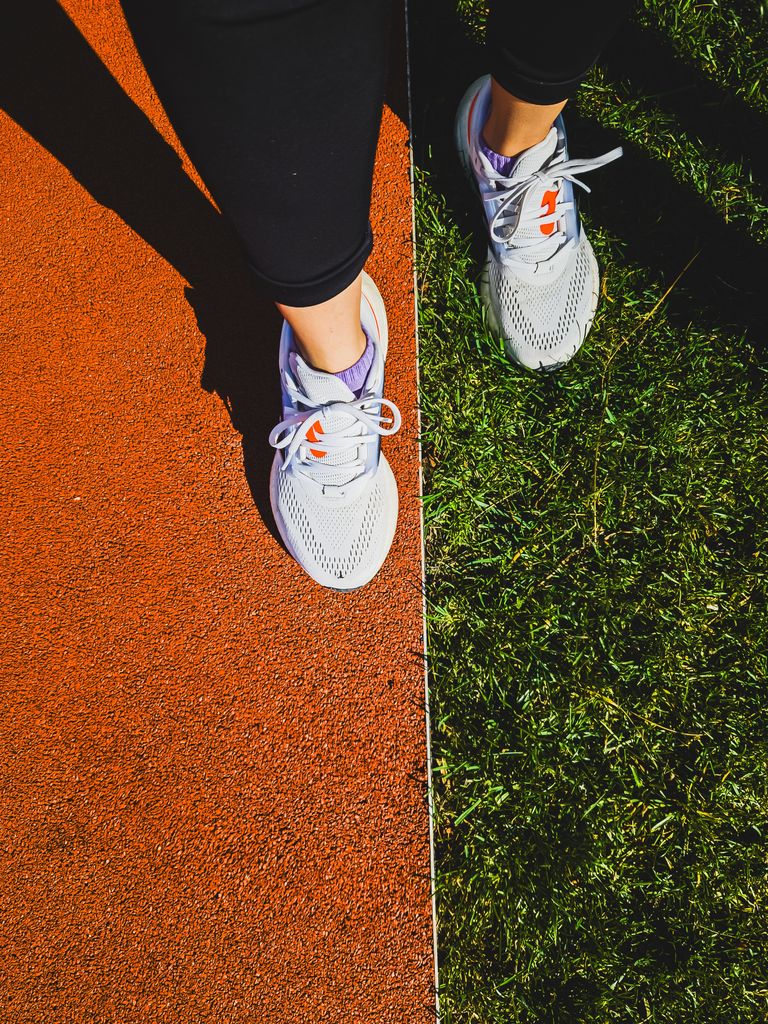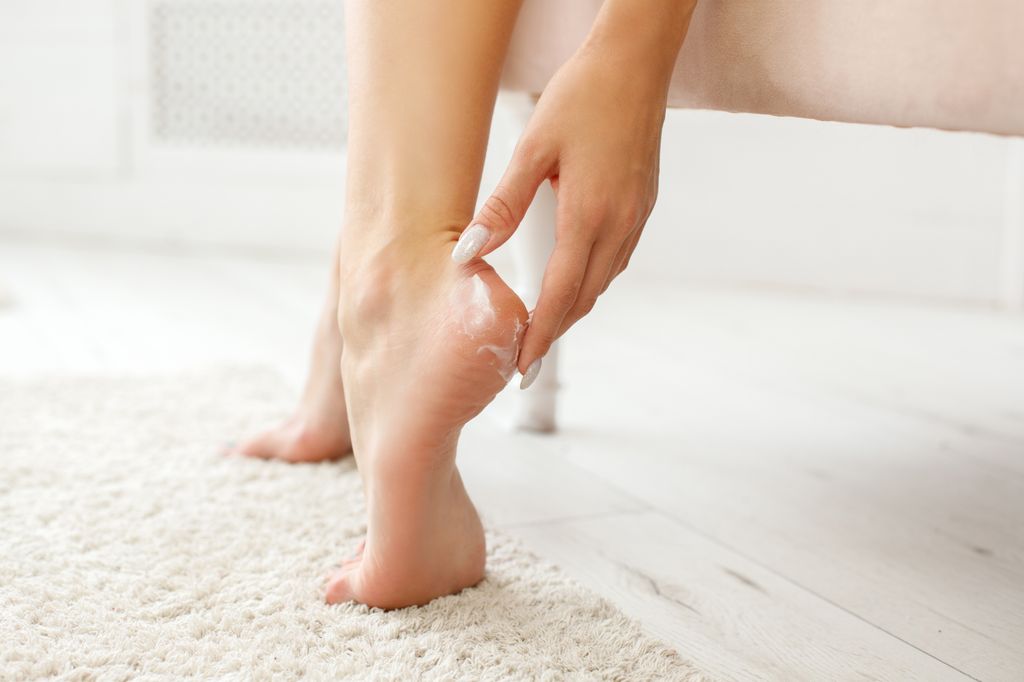When you think about menopause, hot flashes, night sweats, and mood swings are probably the first symptoms that come to mind. But did you know that menopause can also affect your feet? One unexpected and often overlooked symptom is plantar fasciitis, a common condition causing pain in the heel and bottom of the foot.
About a year after my last period, I started to notice that as soon as I would get out of bed each morning, I would have a sharp stabbing pain in my heels as I walked to the bathroom. I had been exercising more, including running on a treadmill, so at first I put it down to that.
I spoke to my trainer at the gym and he suggested that I do some extra stretching which helped a little, but not enough. And so I started to do some research, and I found out that the pain I was experiencing could be a symptom of menopause.
“In our clinic, where we consult with around 3,000 women each month, many women complain of foot pain, especially first thing in the morning when they get out of bed,” explains Dr Louise Newson, a menopause specialist, author and founder of Newson Health.
“During perimenopause and menopause, levels of hormones oestrogen, progesterone and testosterone decline and then stay low forever. These three hormones have numerous beneficial effects throughout your body. They reduce inflammation everywhere, including in the musculoskeletal system. This means when women have low levels of these hormones there is often more inflammation in the muscles, joints and soft tissues leading to symptoms of muscle and joint pains and stiffness, and for some women conditions such as plantar fasciitis, carpal tunnel syndrome, frozen shoulder or more generalised arthritis.”
READ: How I'm learning to love my meno belly
Dr Newson also explains that low estrogen levels will reduce the elasticity of the band of tissue that connects your heel bone to your toes which can lead to plantar fasciitis developing. And on top of that, your collagen levels reduce during menopause and the degeneration of collagen in the sole of your foot can also lead to plantar fasciitis occurring.
So give me some good news! Can I do something about it? “Keeping active and doing regular exercise are really important to improve musculoskeletal health,” Dr Newson explains. And HRT is worth a try too. “The majority of women who take HRT, often with testosterone, find that their muscle and joints pains, as well as symptoms related to their plantar fasciitis, really improve.”
Renowned podiatrist, Margaret Dabbs MBE also explains that your choice of footwear can help to avoid developing plantar fasciitis. “There has been a big increase in cases of plantar fasciitis as a result of the trend away from wearing heels and the wearing of flat pumps and trainers, which leave feet less supported,” Margaret explains to HELLO! “Wearing a heel of 1.5 inches will help to push your weight forward slightly to take pressure off your heels, and cushioned insoles will also help.”
Making lifestyle changes and incorporating specific exercises can significantly reduce the risk of plantar fasciitis during menopause too. When symptoms flare up, Margaret recommends taking an iced foot bath to help alleviate the inflammation. “Regular stretching and strengthening exercises that focus on the Achilles tendon, calf muscles, and the plantar fascia will also help to keep your feet strong and flexible,” Margaret explains.
Looks like I'll be rocking those heels, taking more ice baths and stretching my way to comfy feet soon!











